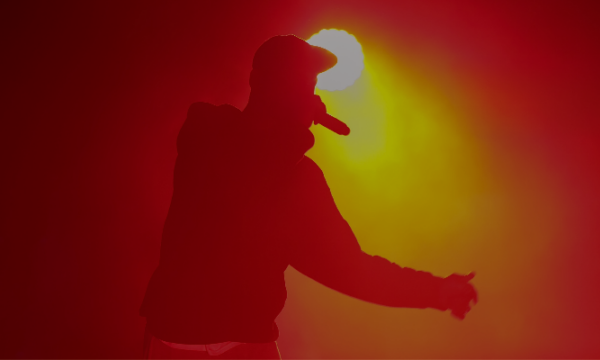Exploring Local Rap Music: Pros and Cons
Rap music, known for its lyrical prowess and compelling beats, often connects with listeners on a deeply personal level. This connection intensifies when it comes to local rap from your area. The local rap scene is rich with unique stories and perspectives, making it a compelling genre to explore. However, as with any musical journey, there are both pros and cons to consider. In this post, we’ll dive into the intricacies of the local rap scene, examining its advantages and potential drawbacks.
The Pros of Local Rap
Cultural Connection and Community Insight
One of the most significant advantages of listening to local rap is the cultural connection it fosters. Local rap often draws inspiration from the culture, history, and social dynamics of the region. By immersing yourself in local artists’ work, you gain insight into your community’s narrative—its struggles, triumphs, and cultural nuances. This can deepen your appreciation for the diverse experiences that shape the fabric of your area. It’s like receiving a firsthand account of the community’s stories through the artists’ eyes.
For example, an artist from a city grappling with economic hardship may weave themes of resilience and hope into their lyrics, providing listeners with a relatable experience that resonates on a personal level. Engaging with this music allows you to not only enjoy the beats but also understand the context in which they were created.
Supporting Local Artists and Empowering Change
Supporting local artists also has tangible impacts on your community. As these musicians gain recognition, they often address and bring attention to overlooked issues that affect the people around them. By championing local talent, you’re not only enjoying their music but also contributing to a movement that can inspire change and foster dialogue on important social issues.
Additionally, local artists frequently collaborate with community organizations or engage in activism, using their platforms to raise awareness about pressing matters such as social injustice, mental health, or poverty. This symbiotic relationship between artists and their communities can drive positive change and promote social cohesion.
Fresh Perspectives and Unique Storytelling
Local rap provides a platform for artists to share their unique viewpoints on life. This genre often reflects the joys and challenges faced by individuals in that community, offering fresh perspectives that you may not encounter in mainstream rap. Through their lyrics, local artists can challenge stereotypes and present nuanced understandings of their environment, enriching your listening experience.
Moreover, local rap allows for diverse storytelling techniques. Artists may experiment with different narrative forms, blending personal experiences with broader societal themes, creating a rich tapestry of sound that captivates listeners.
Fostering a Thriving Creative Scene
Listening to local rap also means supporting the local creative scene. This encouragement is vital for artists who may not have the resources of larger, established acts. By engaging with their music, you help pave the way for these talents to express themselves, fostering a culture of creativity and innovation within your community.
Participating in local shows, sharing their music on social media, or attending community events can create an environment where artists feel valued and encouraged. This grassroots support is crucial for the sustainability of local arts, ultimately contributing to a vibrant cultural landscape.
The Cons of the Local Scene
Limited Exposure to Diverse Influences
Despite its benefits, there are potential drawbacks to focusing solely on local rap. One significant concern is limited exposure to the global rap scene. The genre is vast and varied, and concentrating too much on local artists can restrict your access to diverse sounds, styles, and messages from around the world. This limited perspective could hinder your overall understanding and appreciation of rap as an evolving genre.
Global influences often shape the sound of contemporary rap, and neglecting these wider trends may result in a narrower appreciation of the genre’s richness. By exploring international artists, you can gain insights into different cultural narratives and stylistic innovations that enhance your listening experience.
Quality Variability Among Emerging Artists
While many local rap scenes are brimming with talent, there’s a chance of encountering artists who are still honing their craft. This variability in quality means you might come across tracks that don’t resonate as strongly with you. It’s important to approach local rap with an open mind while being discerning about what you choose to support.
Additionally, emerging artists may be in the process of developing their unique sound or lyrical style, which can lead to a mix of polished and rough tracks within a single local scene. This inconsistency can be both a challenge and an opportunity, as it allows for growth but may also leave some listeners feeling unsatisfied.
Narrow Themes and Limited Relevance
Another consideration is that some local rap may be heavily centered on regional issues, which could limit its relevance and appeal to listeners outside that area. While local artists may capture the essence of their community beautifully, the specific themes might not resonate with a broader audience. This focus can make it challenging for some listeners to connect with the music if they don’t share the same experiences.
For instance, a song discussing specific local events or cultural references may not translate well for listeners unfamiliar with the context, potentially leading to a disconnect. However, this localized storytelling can also foster deep connections for those who do understand and share those experiences.
Economic Challenges in Production and Distribution
The local rap scene often faces economic challenges that can impact the production quality and distribution of music. Limited resources may hinder artists’ ability to produce polished tracks or access broader marketing avenues. As a result, local artists might struggle to gain widespread recognition, and their music may not reach potential fans who would appreciate it.
This economic disparity can create a divide between local talent and the commercial music industry, making it difficult for emerging artists to break through. Supporting initiatives that promote local talent, such as community-funded recording studios or grant programs for musicians, can help bridge this gap.
Navigating Politics and Rivalries
Finally, the music industry can be rife with politics, and local rap is no exception. Artists often navigate a landscape filled with competition, jealousy, and rivalry, which can create a toxic environment. Interactions with other artists may be fraught with misunderstandings or conflicts, and local rap scenes can be influenced by cliques and power dynamics that overshadow artistic merit.
This negative atmosphere can stifle collaboration and discourage artists from pursuing their passion, ultimately affecting the quality of the music being produced. Building a supportive community that encourages collaboration over competition can help mitigate these issues, fostering a healthier environment for artistic expression.
Final Thoughts
Listening to local rap music has its share of pros and cons. While it can foster a strong cultural connection, empower communities, and offer fresh perspectives, it also carries the risks of limited exposure, quality variability, narrow themes, market challenges, and the negative politics of the music business.
Striking a balance between supporting local artists and exploring the wider rap landscape can enrich your musical journey. Embracing the local scene allows you to connect with your community on a deeper level, while also exploring global influences can broaden your understanding of rap as a diverse and evolving genre.
Ultimately, whether you’re a casual listener or a devoted fan, exploring local rap can enhance your appreciation for the art form and its power to reflect and influence society.
Justin David
Creative man • Philosopher • Artist • Producer




